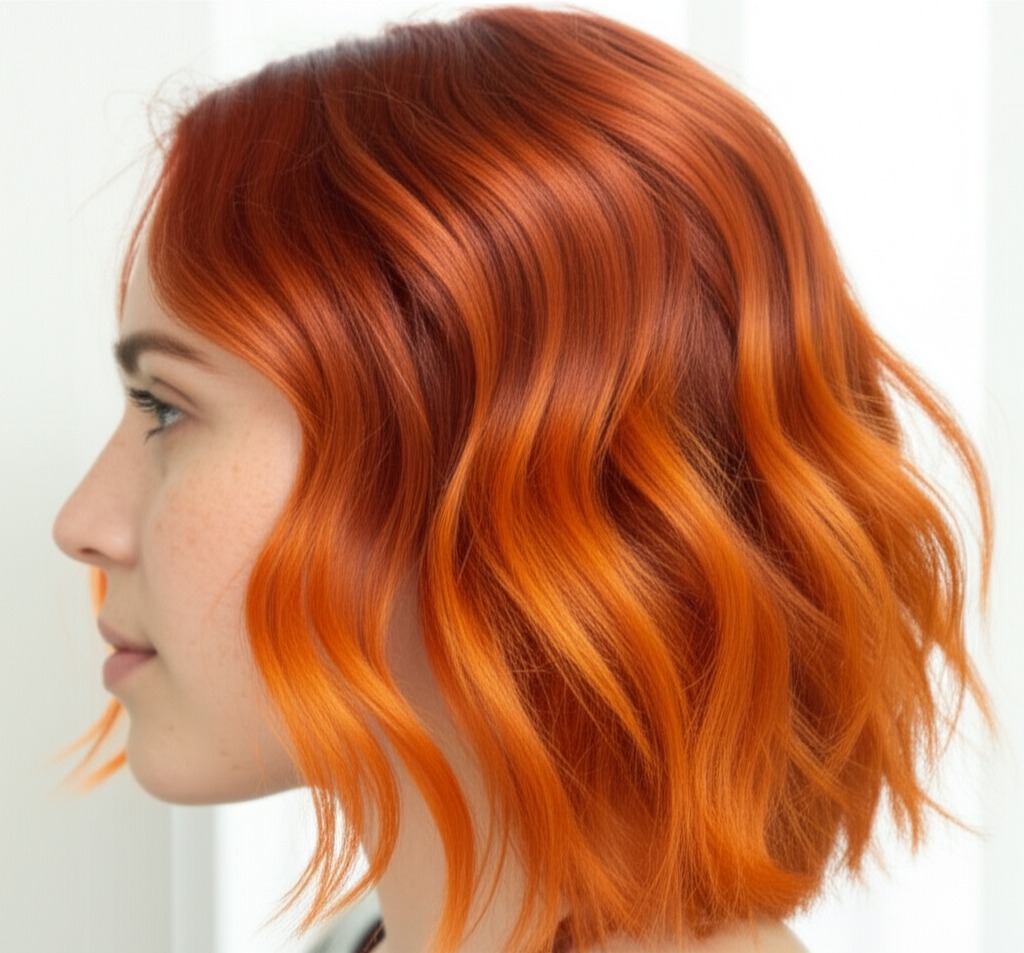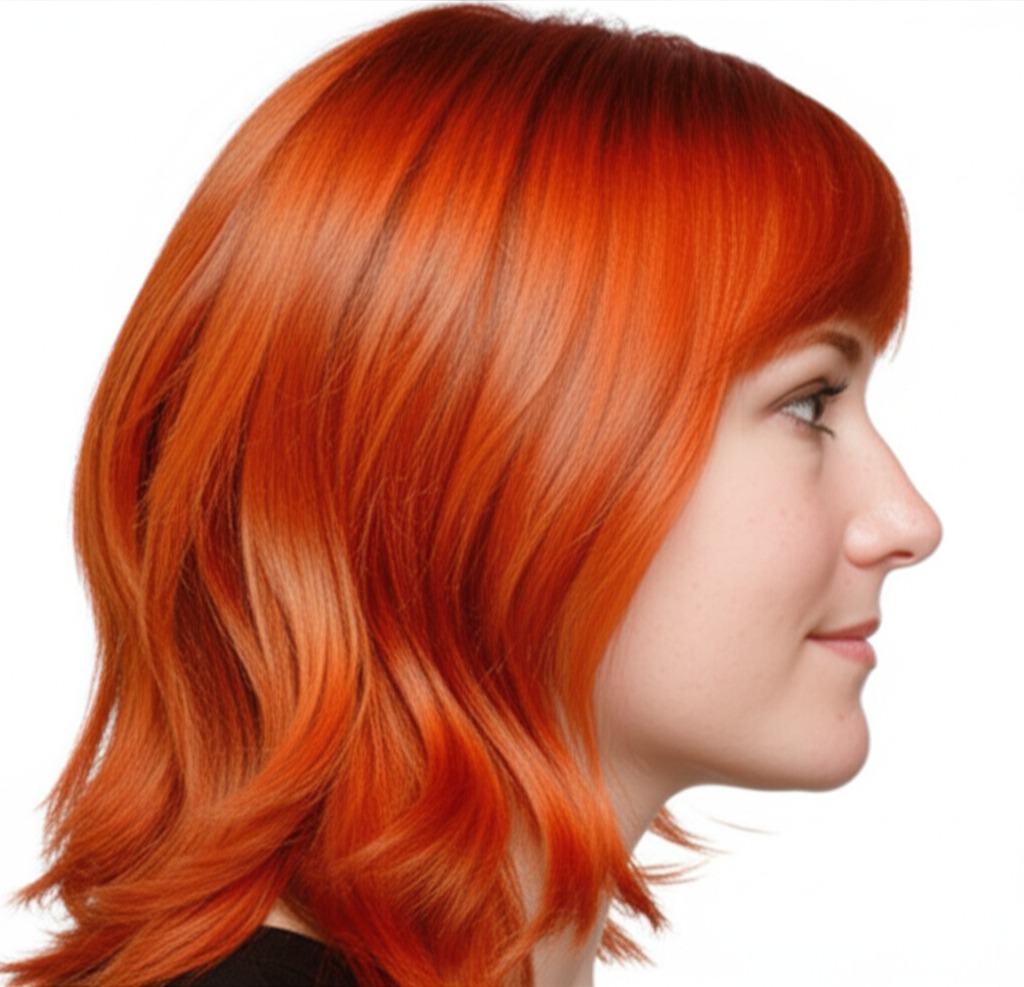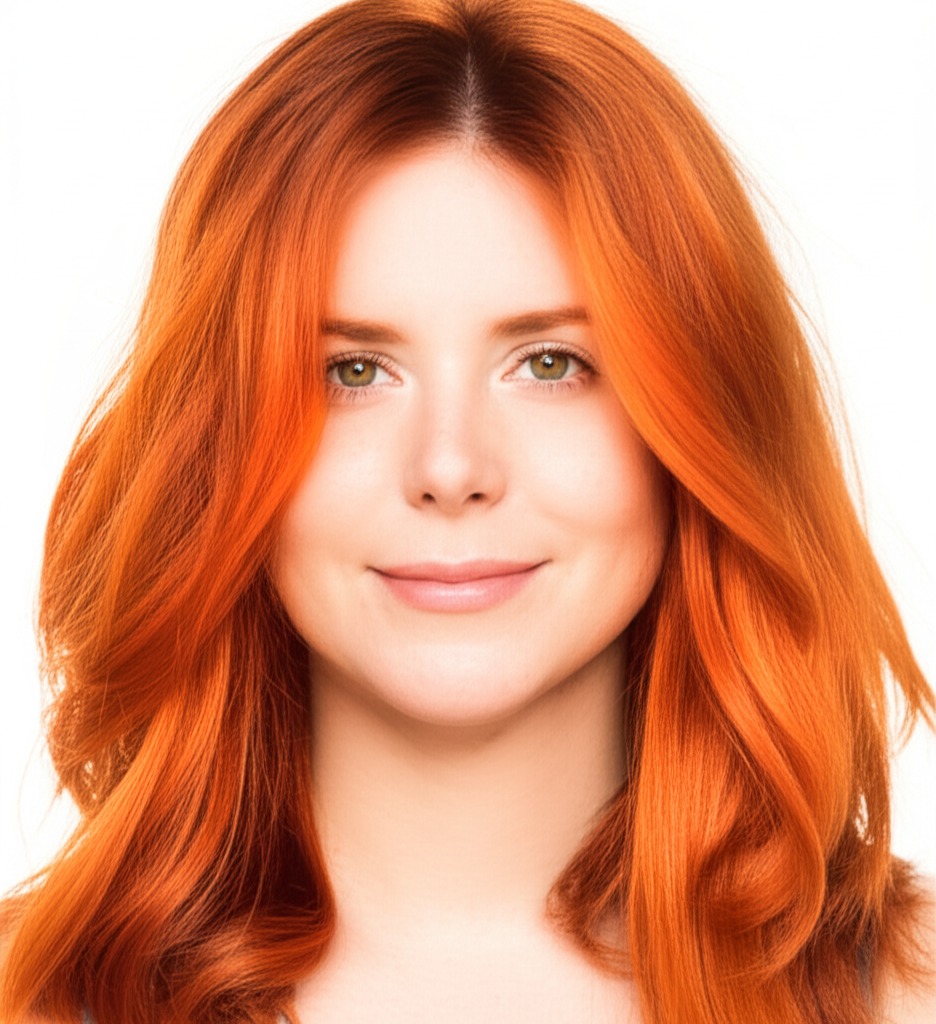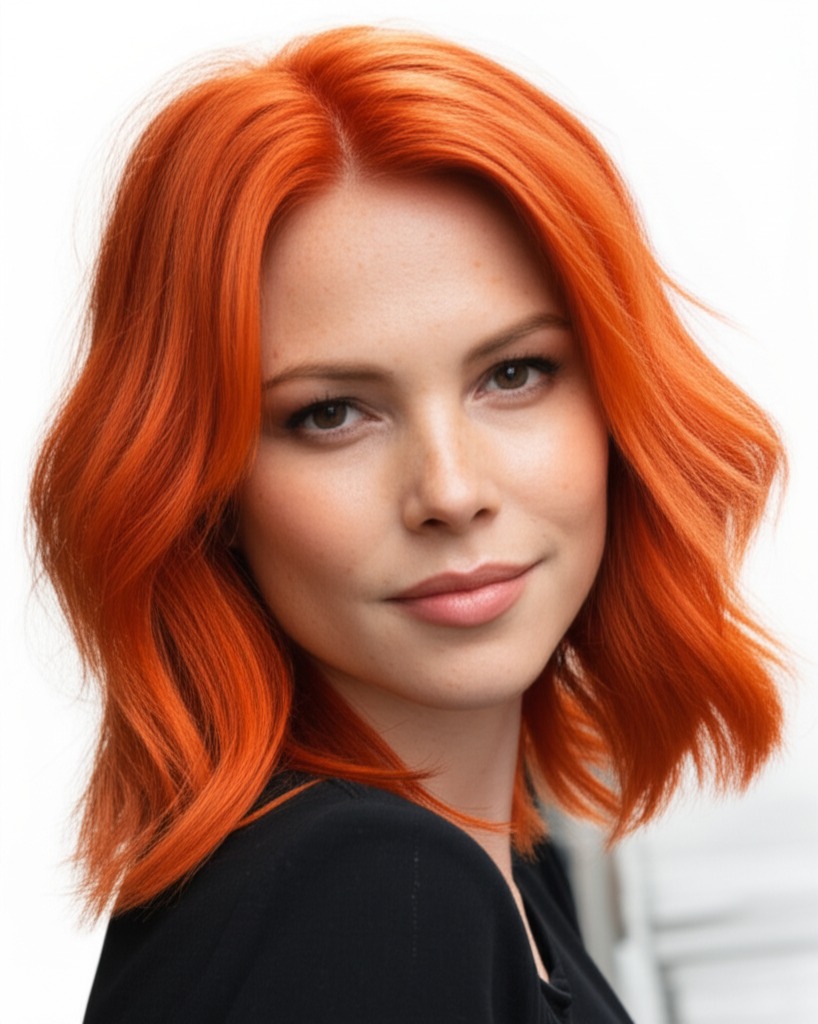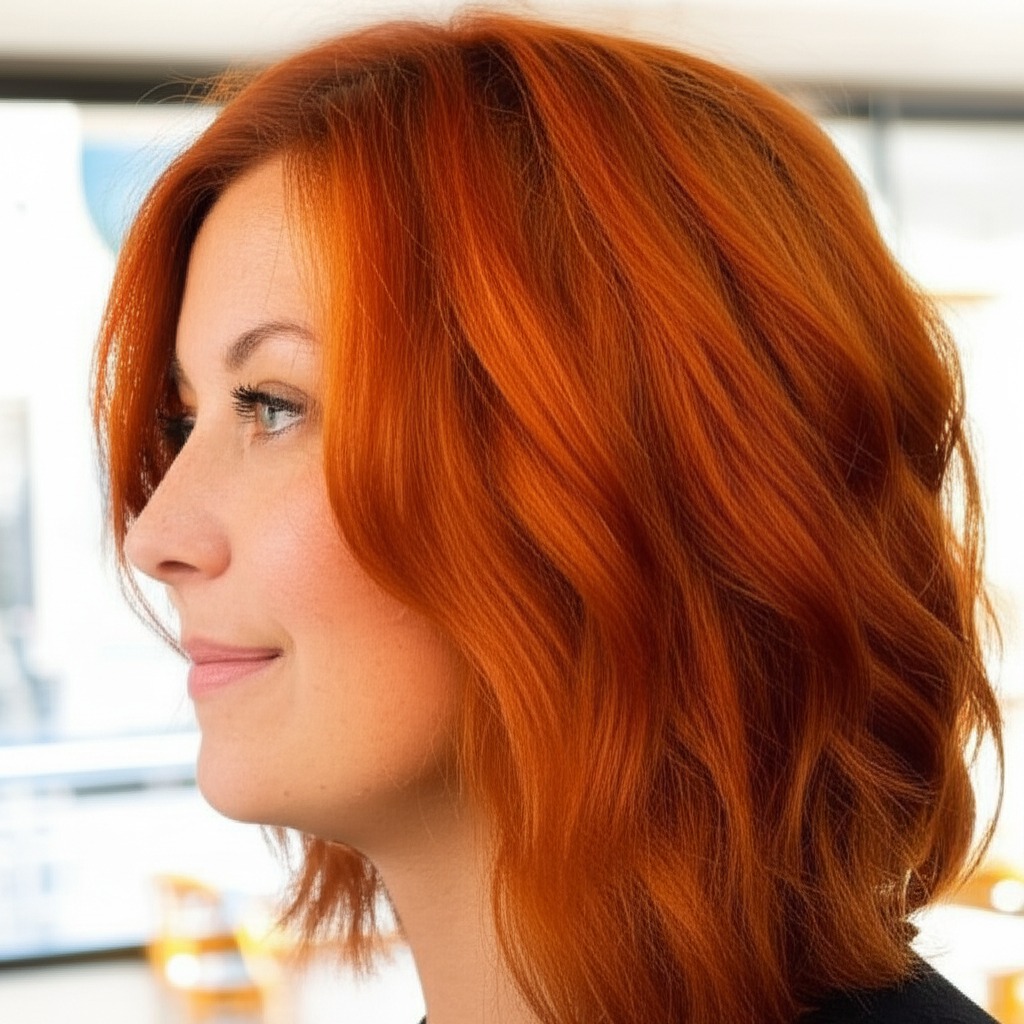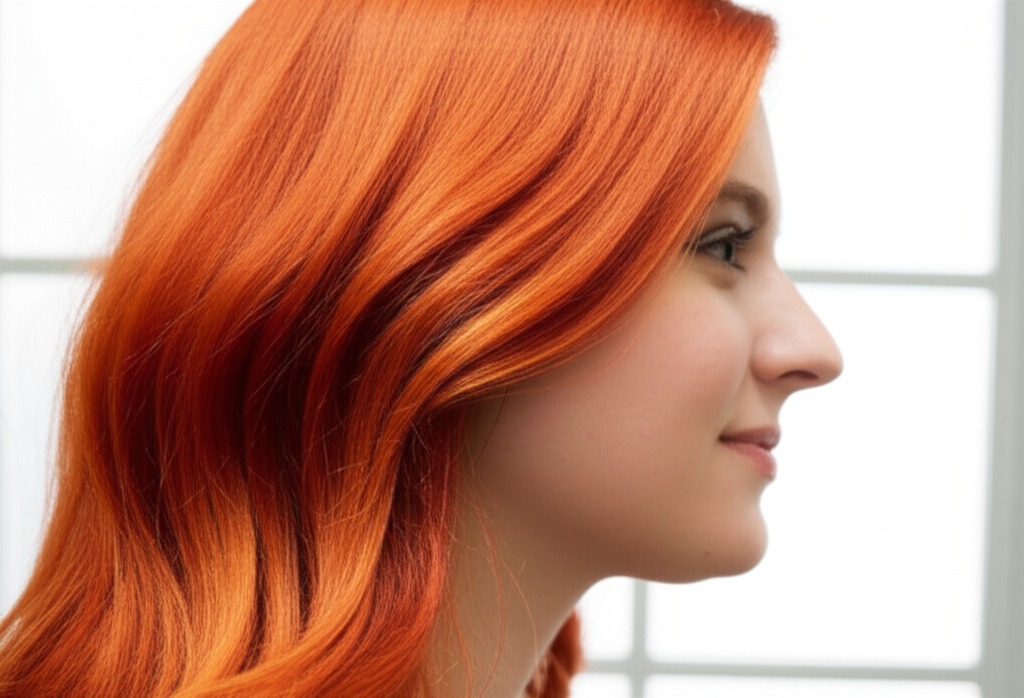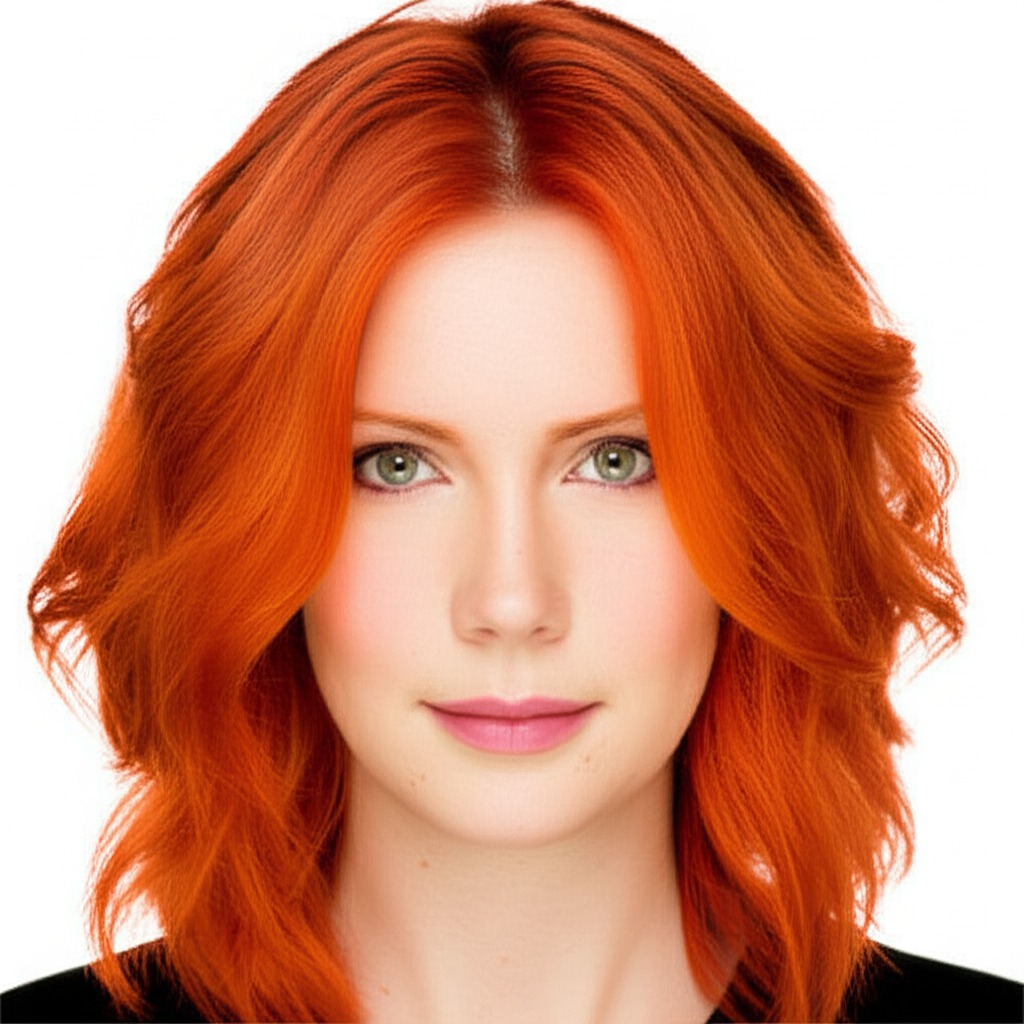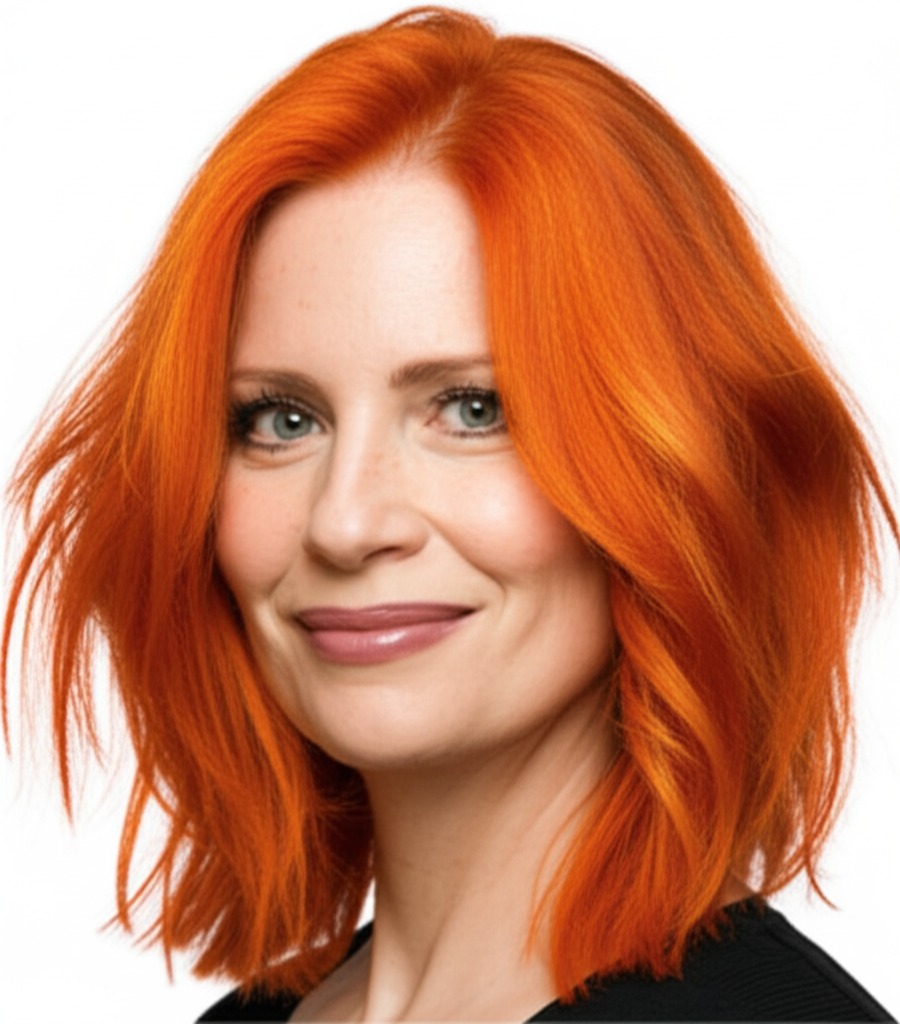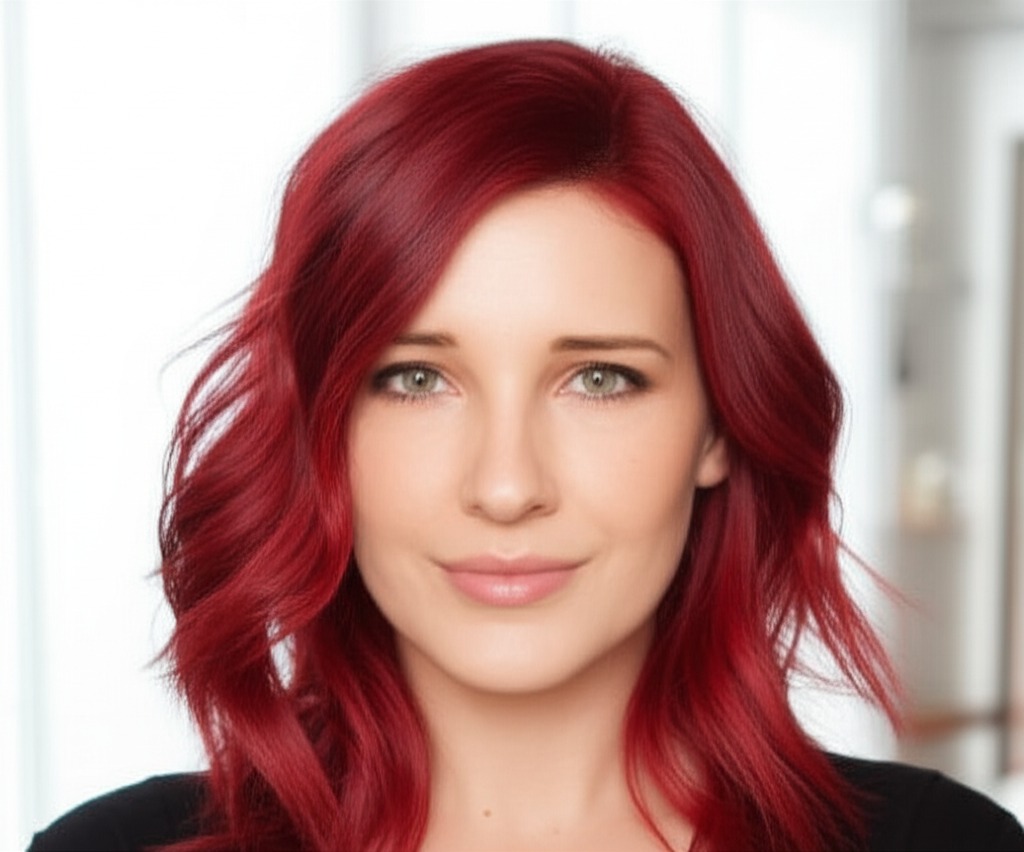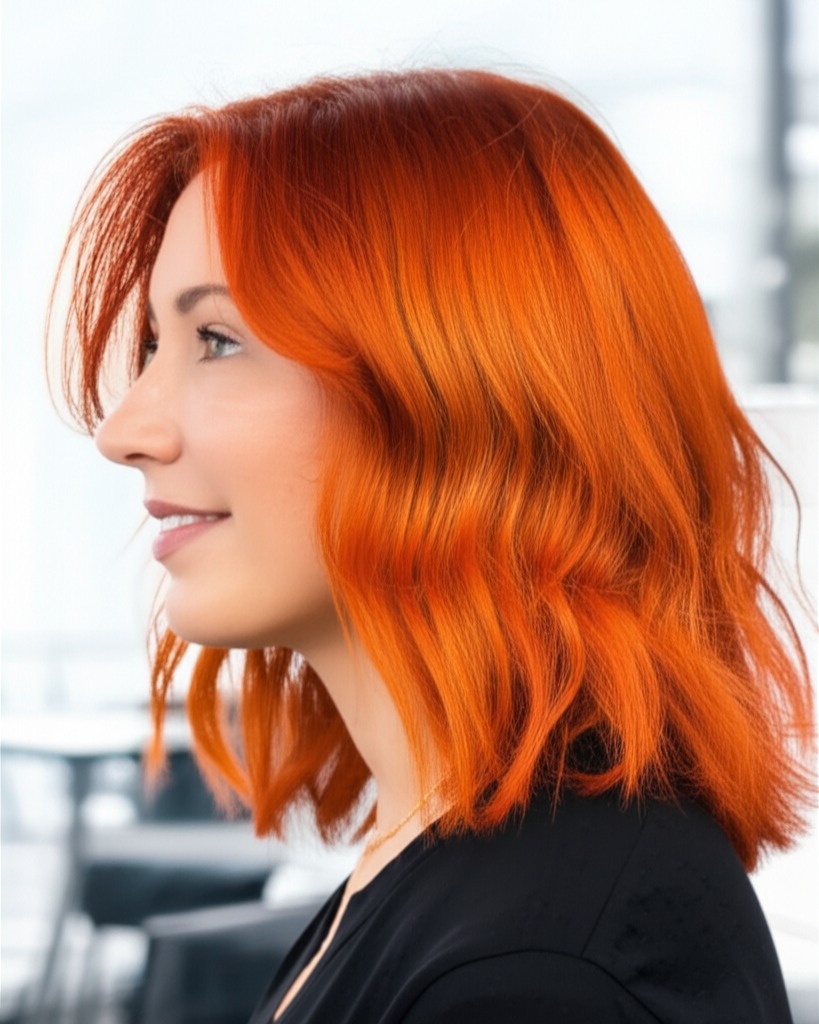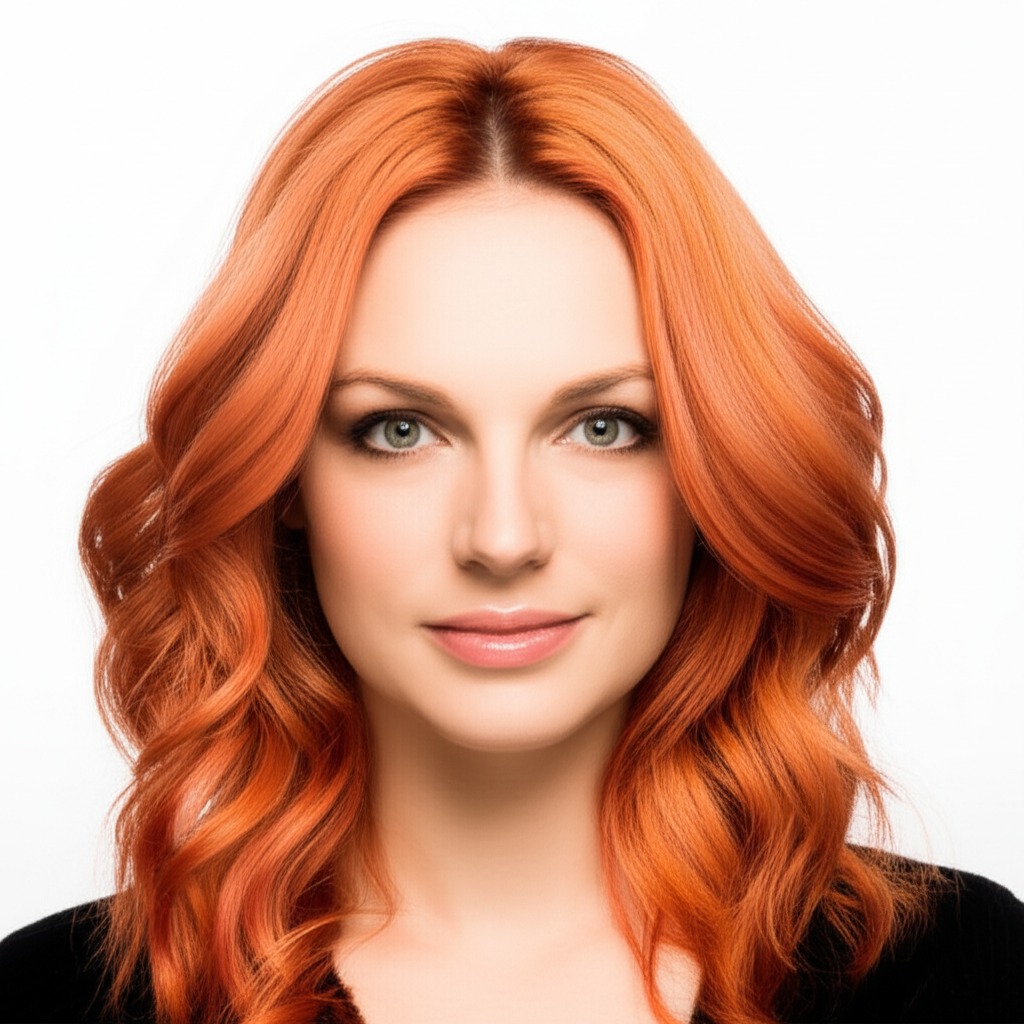#Embrace the Warmth: A Complete Guide to Copper Red Hair Color
Copper red hair is a vibrant and captivating choice that brings warmth and personality to any look. It’s more than just “red”; it's a spectrum of shades with different personalities, from fiery orange-reds to softer, more muted tones. This guide will break down everything you need to know about achieving and maintaining gorgeous copper red hair.
#1. Understanding Copper Red Shades: Depth & Undertone
Copper isn’t one color – it's a family! Here’s what to consider when choosing your perfect shade:
- Undertones: This is crucial.
- Warm Copper (Orange-Red): Think pumpkin spice, vibrant sunsets. These have a noticeable orange base and are the most intense.
- Neutral Copper (True Red): A balanced blend of red and brown; less fiery than warm coppers, but still rich.
- Cool Copper (Berry-Red): These lean towards purple or burgundy tones. They’re softer and more muted, often described as “cranberry” or "wine." They are the most challenging to achieve on warmer hair bases.
- Depth/Levels: Hair color is numbered using a level system, with 1 being the darkest black and 10 being the lightest blonde. Copper reds typically range from levels 6-9 (medium brown to light auburn). The lower the number, the darker the copper will appear; higher numbers create lighter, brighter shades. A "level 7 copper" is a medium-toned red.
#2. Who Does Copper Red Flatter?
Choosing a color that complements your features is key!
- Skin Tone & Undertone:
- Warm Skin Tones (yellow/golden undertones): Warm coppers and neutral coppers will make your skin glow. Think olive, tan, or golden complexions.
- Neutral Skin Tones (mix of yellow & pink): You can often pull off a wider range of copper shades! Experiment with warm or cool versions to see what you like best.
- Cool Skin Tones (pink/blue undertones): Cool coppers can work, but it’s more challenging and requires careful consideration. If your skin is very fair and pink, a bright copper might wash you out. Softer, berry-toned coppers are often better.
- Eye Color: Copper red looks stunning with:
- Green Eyes: The warmth of the copper enhances green eyes beautifully.
- Hazel Eyes: Copper can bring out different flecks of color within hazel eyes.
- Brown Eyes: Warmer coppers create a striking contrast and add vibrancy.
- Natural Hair Level Starting Point: Copper red is generally easier to achieve on:
- Levels 4-7 (Dark Brown to Medium Brown): This provides a good base for the color to build upon.
- Levels 8-10 (Light Brown to Blonde): May require more sessions and potentially toner adjustments, as lighter hair can sometimes pull too brassy with copper tones.
#3. Technique Options: From Subtle to Bold
How you apply the color makes a big difference!
- Single Process: A uniform application of color from root to tip. Best for covering gray or achieving a solid, even tone on already-red hair.
- Highlights/Lowlights: Adds dimension and depth. Copper highlights brighten up the overall look; copper lowlights add richness and contrast.
- Babylights: Very fine, subtle highlights that mimic natural sun-kissed streaks. A softer approach for a more blended effect.
- Gloss/Toner: A semi-permanent color used to adjust the tone of existing hair or enhance shine. Essential for maintaining copper’s vibrancy and preventing brassiness (more on that later!).
- Balayage-Effect: Hand-painted highlights create a natural, sun-kissed look with softer root transitions. A great option for low maintenance.
- Solid vs. Dimensional: A solid color is uniform throughout; dimensional techniques (highlights, balayage) add depth and movement.
#4. Maintenance & Longevity: Planning Ahead
Copper red fades faster than some other colors due to its warmth. Be prepared!
- Wash Frequency: Limit washing to 2-3 times per week. Dry shampoo is your friend!
- Toner Refresh: Expect to tone your hair every 6-8 weeks, or sooner if you notice brassiness. This keeps the color true and vibrant.
- Root Growth Pacing: Consider a balayage approach for slower regrowth lines. A solid color will show roots more quickly.
- Budget/Time Planning: Copper red typically requires multiple salon visits to achieve the desired shade, especially from darker bases. Expect to spend $150-$400+ per visit (or more in major cities). At-home toner touch-ups can save money but require skill and precision.
#5. Seasonality & Pairing with Cuts: Adapting Your Look
- Seasonal Tweaks:
- Fall/Winter: Deeper, richer coppers look cozy and warm during colder months.
- Spring/Summer: Lighter, brighter coppers (with golden highlights) evoke a sun-kissed vibe.
- Cut Pairings:
- Bob & Lob: Copper looks incredibly chic with blunt bobs or lobs – the color pops against the sharp lines.
- Long Layers: Adds movement and dimension; copper shines beautifully in long, flowing layers.
- Pixie Cut: A bold choice! Choose a softer, cooler copper to avoid looking too harsh.
- Event/Occasion Picks:
- Work: Neutral or cool coppers are often more professional-looking.
- Daytime: A brighter, warmer copper can be fun and playful.
- Evening: A deep, rich copper with highlights creates a glamorous look.
- Weddings: Consider the wedding’s color scheme – a softer copper complements many palettes beautifully!
#6. At-Home Care: Protecting Your Investment
Proper care is essential for maintaining your copper's vibrancy and health.
- Sulfate-Free Shampoo & Conditioner: Sulfates strip away moisture and fade color quickly.
- Clarifying Cadence: Use a clarifying shampoo (designed to remove buildup) occasionally – no more than once a month, as it can also be drying.
- Heat Protection: Always use heat protectant spray before using styling tools like blow dryers, straighteners, or curling irons.
- Color-Safe Styling Tips: Avoid harsh chemicals and excessive sun exposure. Rinse hair with cool water to seal the cuticle.
- Product Checklist: Sulfate-free shampoo & conditioner, color-safe heat protectant, deep conditioning mask (weekly), dry shampoo.
#7. Common Pitfalls: Troubleshooting Your Copper
- Brassiness: Copper can oxidize and turn brassy over time. Regular toning with a violet or blue-based toner will counteract this.
- Banding: Uneven color application can create noticeable bands of color, especially on darker bases. This is best avoided by a skilled stylist.
- Patchiness: If your hair isn’t evenly colored to begin with, you might see patches of different shades. A professional consultation and careful application are key.
#8. Pros & Cons: Weighing the Options
Pros:
- Warmth & Vibrancy: Copper red is undeniably eye-catching and brings a lot of personality.
- Versatility (with proper technique): Can be adapted to suit various skin tones and styles.
- Compliments Many Skin Tones: Especially warm undertones.
Cons:
- High Maintenance: Requires frequent toning and careful upkeep.
- Fade Risk: Copper tends to fade faster than other colors.
- Commitment: It's a bold choice that can be difficult (and costly) to reverse completely.
#9. Salon Consultation Script: Setting Expectations
Before you sit in the stylist’s chair, be prepared! Here are some questions and points to discuss:
- "I want a copper red hair color, but I'm not sure which shade is best for my skin tone."
- “Can we assess my natural level and undertone to determine the most flattering option?”
- "What technique would you recommend (single process, balayage, etc.)?"
- "How often will I need to come in for toning appointments?"
- "What at-home products do you suggest to maintain my color’s vibrancy?"
- “Can we discuss a plan for root regrowth and how that will affect the overall look?”
#10. FAQs: Your Burning Questions Answered
- Can I go copper red from black hair? It's possible but requires multiple sessions (bleaching) which can be damaging. A gradual approach is recommended.
- Will copper red work on graying hair? Yes, but a color-correcting primer might be needed to ensure even coverage and prevent unwanted tones.
- How long does copper red last? The initial color lasts 4-6 weeks; toner typically needs refreshing every 6-8 weeks.
- Is copper red damaging to my hair? Any coloring process can cause some damage, but proper care (heat protection, deep conditioning) minimizes it.
- Can I tone my copper at home? Yes, with caution! Follow instructions carefully and perform a strand test first. It's best left to professionals if you’re unsure.
- What if my copper turns orange? This usually indicates brassiness; use a violet-based toner to neutralize the orange tones.
With careful planning and proper care, your journey into the world of copper red hair can be both beautiful and rewarding!
